Science Buddies
Science Buddies: The Big Dig
Even though many cities have recycling programs, a lot of trash still ends up in the dump. Find out which materials will break down and which materials won't. Will the results of this experiment change which products you often buy?
Science Buddies
Science Buddies: How Fast Do Seismic Waves Travel?
Here's a geology project that uses historical seismograph data that you can collect from the comfort of your own computer. You'll use a web interface to a network of seismometers run by the Northern California Earthquake Data Center, at...
Science Buddies
Science Buddies: What's All That Shaking? Make Your Own Seismograph!
If you live in an area where earthquakes happen, you might be especially interested in this science project. You'll learn how to build your own seismograph and how to use it to detect ground motion.
PBS
Pbs Teachers: Rivers of Destiny
This site explains the importance of rivers in the natural balance of life on Earth, and describes what happens when people begin to tamper with rivers. This will also help students identify options for dealing with the outcomes of human...
TeachEngineering
Teach Engineering: Mini Landslide
Students explore how different materials (sand, gravel, lava rock) with different water contents on different slopes result in landslides of different severity. They measure the severity by how far the landslide debris extends into model...
Other
Alaska Sea Grant: Investigation 4 Human Impact Survey
Students examine and record data about the impact human activity has on a local aquatic environment in this teaching unit. They then analyze the information and develop a plan for improvement. The unit depends on being able to take the...
Teachnology
Teachnology: Guide to Tsunamis
For any educator preparing a teaching theme/unit on tsunamis, this is the site for you! Links to a myriad of lesson plans, worksheets, interactive sites, teacher resources, and much more are all found on this one site.
TeachEngineering
Teach Engineering: Survive That Tsunami!
Students use a table-top-sized tsunami generator to observe the formation and devastation of a tsunami. They see how a tsunami moves across the ocean and what happens when it reaches the continental shelf. Students make villages of model...
Purdue University
Purdue University: An S and P Wave Travel Time Simulation
A classroom simulation modeling how earthquake waves travel through Earth at different speeds. A graph is constructed to demonstrate the relationship between the distance and time of travel of seismic waves, and then used to locate the...
Discovery Education
Discovery Education: Dynamic Earth, Tsunami
Use this site to teach your learners what a tidal wave or tsunami is from this lesson plan. The discovery activity shows how a tsunami happens.
TeachEngineering
Teach Engineering: Trash Talkin'
In this activity, students collect, categorize, weigh and analyze classroom solid waste. The class collects waste for a week and then student groups spend a day sorting and analyzing the garbage with respect to recyclable and non...
TeachEngineering
Teach Engineering: Composting Nature's Disappearing Act
In this activity, students explore the idea of biodegradability by building and observing a model landfill. This serves as an introduction to the idea of composting. Students learn about the role of engineering in solid waste management.
TeachEngineering
Teach Engineering: Product Development and the Environment
In this activity, students investigate the life cycle of an engineered product and how the product impacts the environment. They analyze a product using a simple life cycle assessment that assigns fictional numerical values for different...
TeachEngineering
Teach Engineering: Bury Your Trash!
This activity will allow students to bury various pieces of trash in a plotted area of land outside. After approximately two to three months, the trash will be uncovered to allow the students to investigate what types of materials...
TeachEngineering
Teach Engineering: Solid Waste Takes Over
In this lesson, students explore solid waste and its effects on the environment. They will collect classroom trash for analysis and build model landfills in order to understand the process and impact of solid waste management. Students...
TeachEngineering
Teach Engineering: 3 Rc (Reduce, Reuse, Recycle and Compost)
In this lesson plan, students expand their understanding of solid waste management to include the idea of 3RC (reduce, reuse, recycle and compost). They will look at the effects of packaging decisions (reducing) and learn about...
TeachEngineering
Teach Engineering: How Should Our Gardens Grow?
In this lesson, students will learn about types of land use by humans and evaluate the ways land is used in their local community. They will also consider the environmental effects of the different types of land use. Students will assume...
TeachEngineering
Teach Engineering: Earthquakes Rock!
Students learn the two main methods to measure earthquakes, the Richter Scale and the Mercalli Scale. They make a model of a seismograph - a measuring device that records an earthquake on a seismogram. Students also investigate which...
TeachEngineering
Teach Engineering: Land on the Run
Learners learn about landslides, discovering that there are different types of landslides that occur at different speeds - from very slow to very quick. All landslides are the result of gravity, friction and the materials involved. Both...
TeachEngineering
Teach Engineering: Checking the Surf
This lesson introduces the concepts of wavelength and amplitude in transverse waves. In the associated activity, students will use ropes and their bodies to investigate different wavelengths and amplitudes.
Other
Clean Sweep u.s.a.: Energy to Burn [Pdf]
This informative and interactive site examines how we can get power from garbage. Topics include: waste to energy plants, only ash remains, a bright idea, and more.
Alabama Learning Exchange
Alex: Researching Hurricanes With Technology
This lesson will help learners to understand the formation, power, and history of hurricanes. Students will do this using a combination of technological skills. Examples of technology used include: PowerPoint, Word, Netscape Composer,...
Science and Mathematics Initiative for Learning Enhancement (SMILE)
Smile: Earthquake Waves and Their Destructions
Looking for the epicenter of an earthquake and measuring the magnitude of waves are goals for students in this lesson plan for intermediate to middle school students. Students get to analyze the P and S waves.
PBS
Pbs Teachers: Scientific American: The Frontiers Decade: Environment Decade
Investigate man's impact on the environment. Observe different species to see how sensitive they are to human presence, and record your observations in a field notes log.



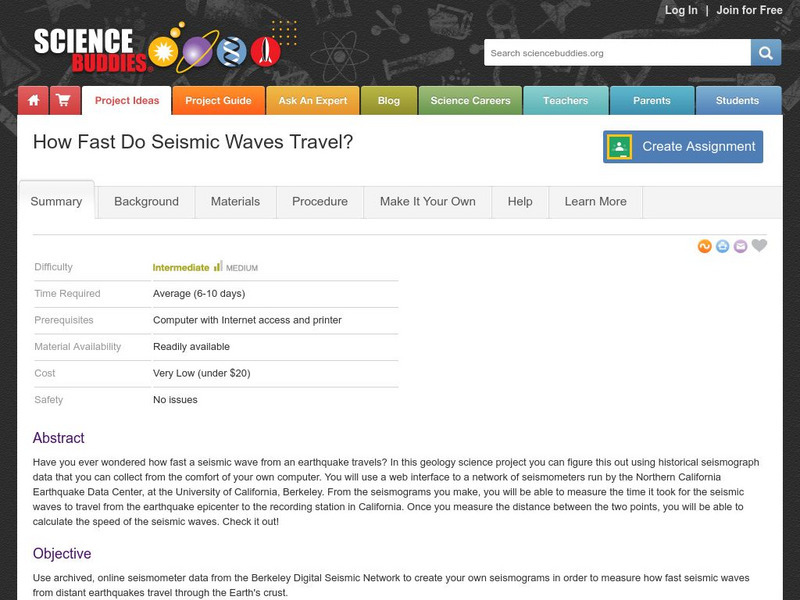
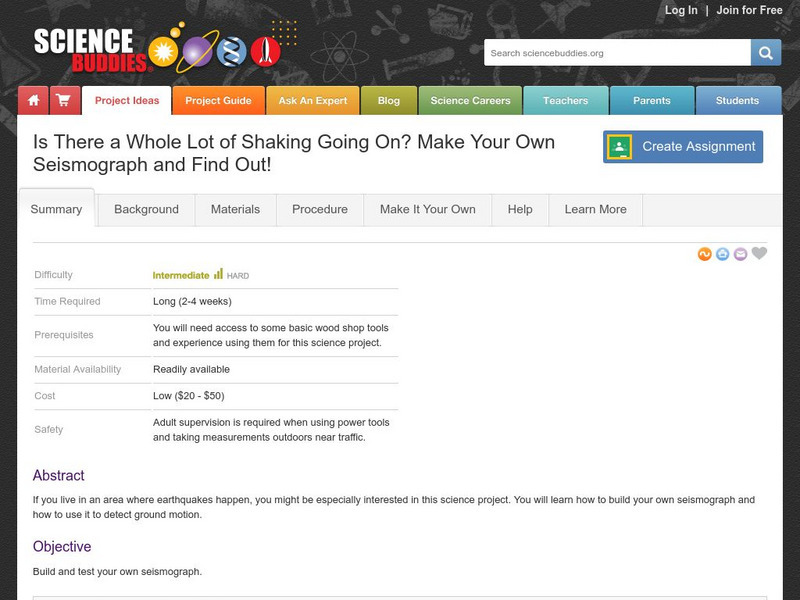

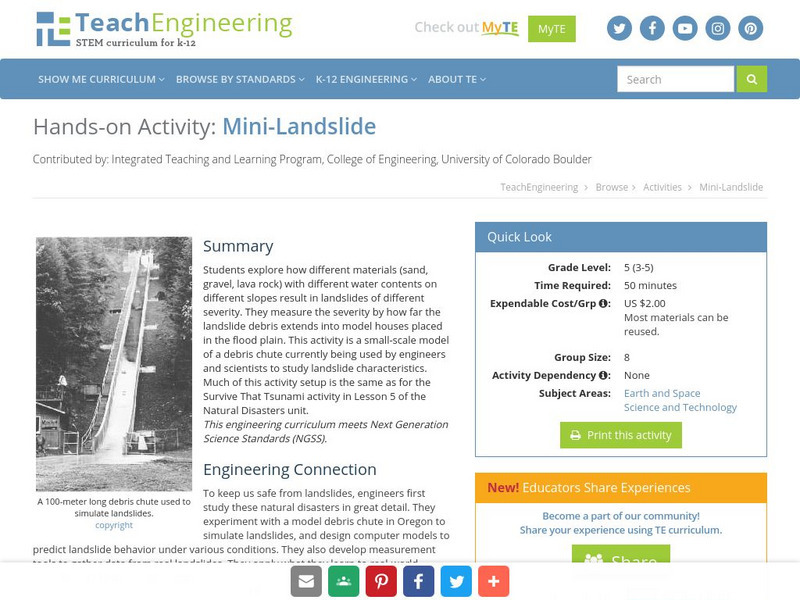





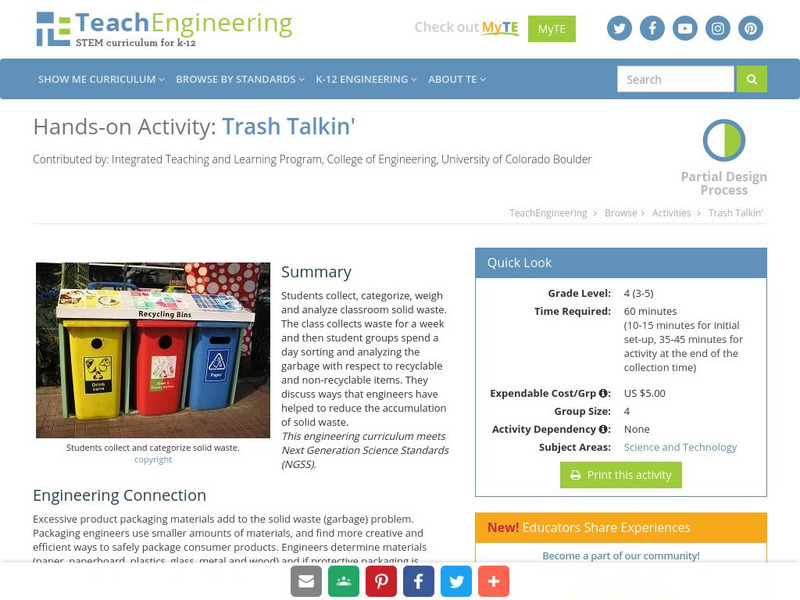
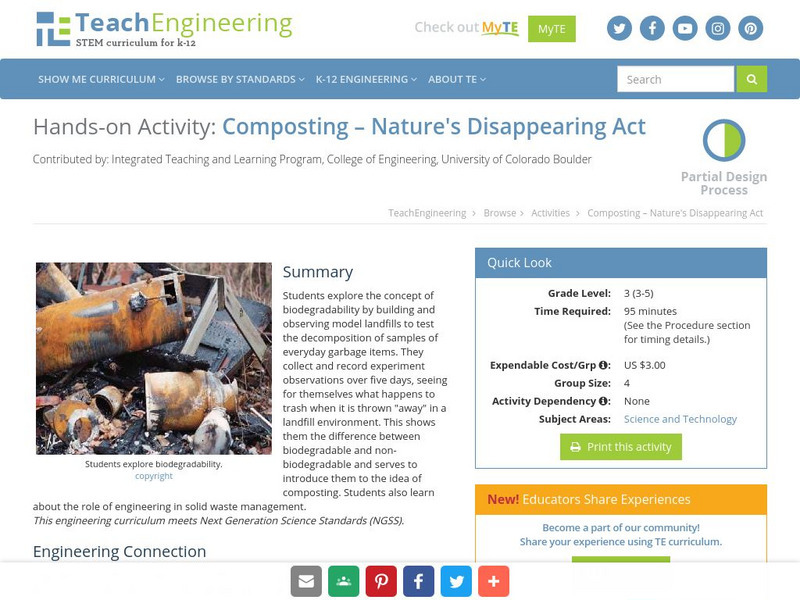

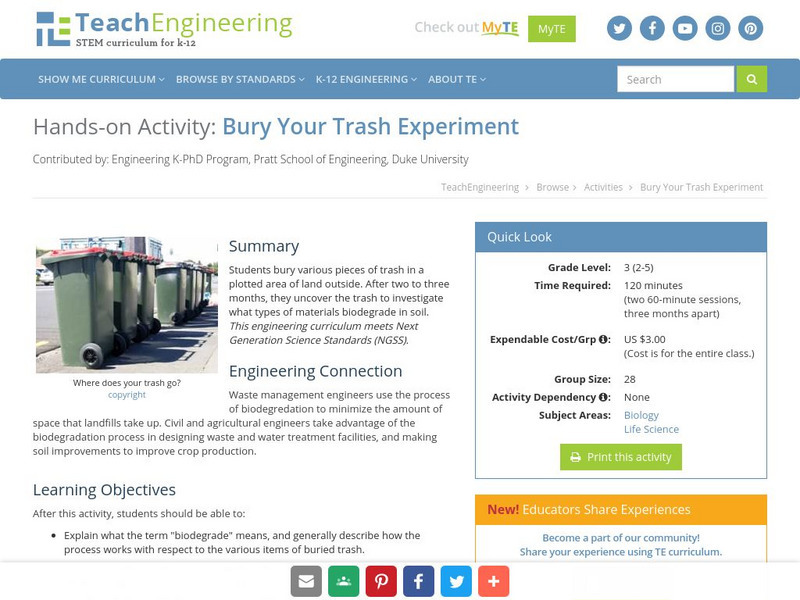
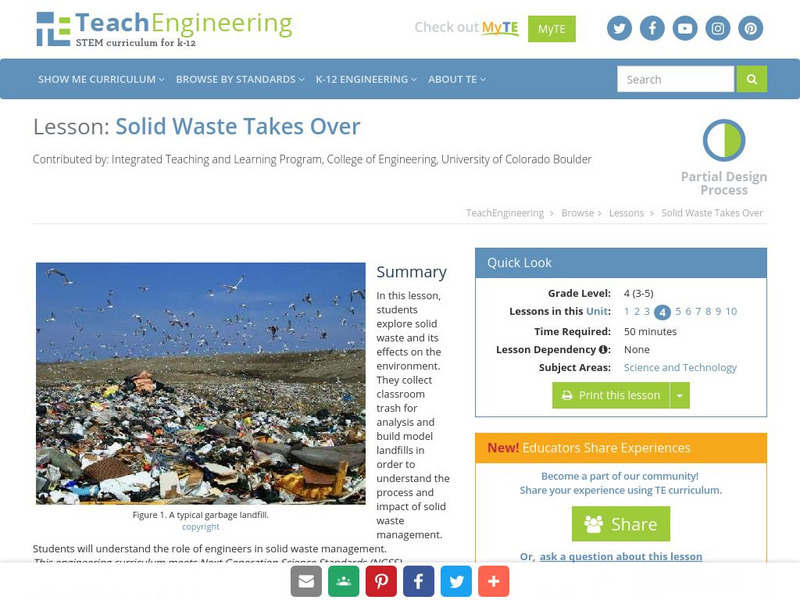

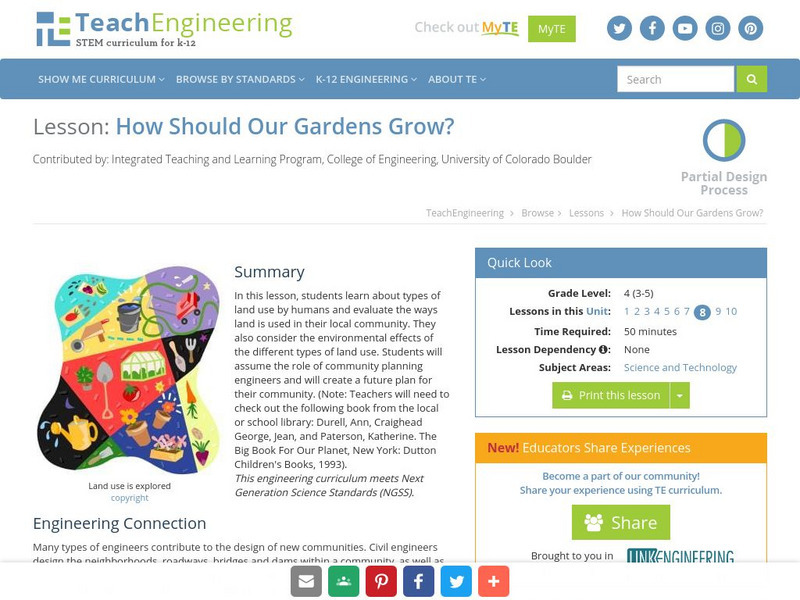
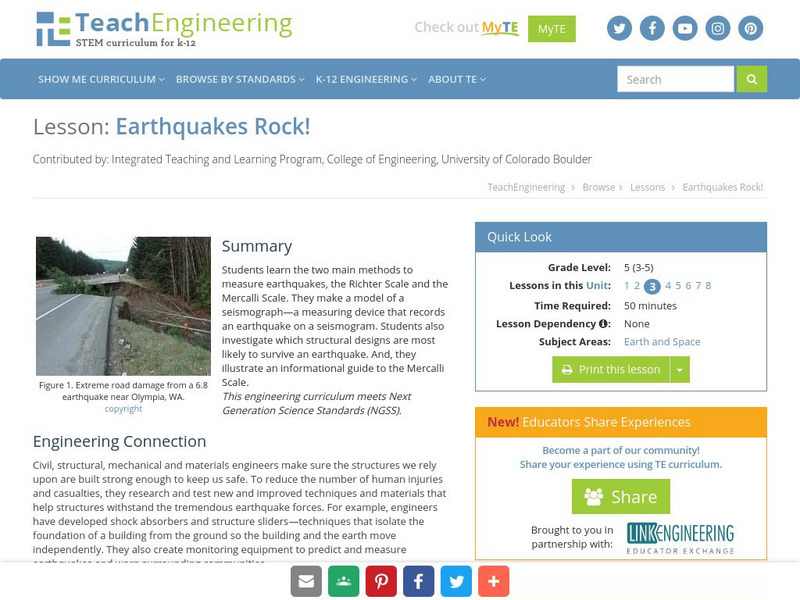
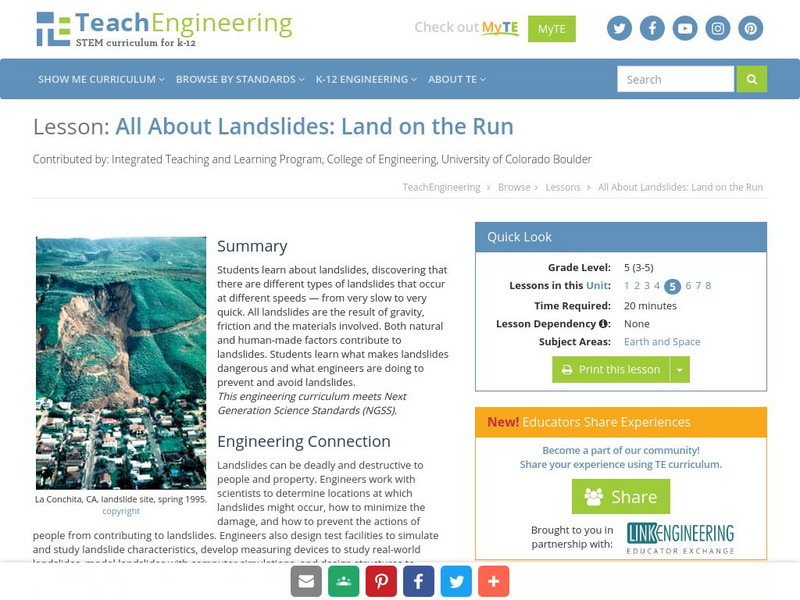

![Clean Sweep u.s.a.: Energy to Burn [Pdf] Activity Clean Sweep u.s.a.: Energy to Burn [Pdf] Activity](https://d15y2dacu3jp90.cloudfront.net/images/attachment_defaults/resource/large/FPO-knovation.png)


